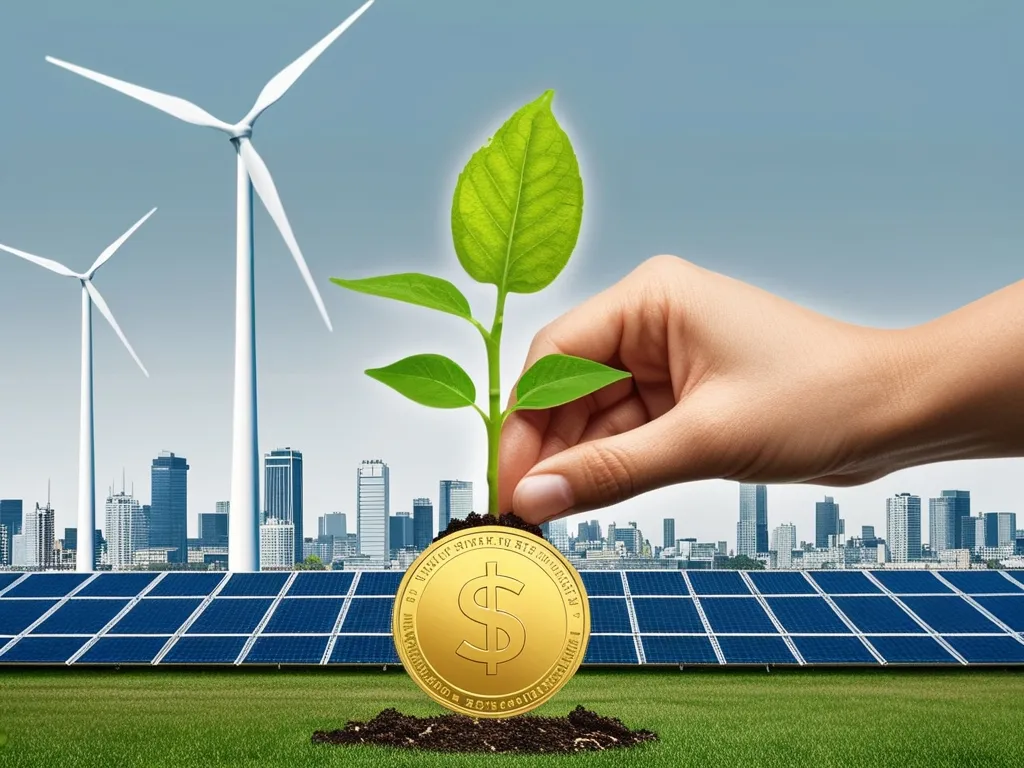In the ever-evolving landscape of finance and investment, a significant shift has been underway, one that is redefining how we approach investing and the impact it has on the world around us. This shift is embodied in the rise of Environmental, Social, and Governance (ESG) investing, a methodology that goes beyond traditional financial metrics to evaluate investments based on their sustainability, ethical practices, and governance standards.
Understanding ESG Investing
At its core, ESG investing is about considering the broader implications of your investment decisions. It’s not just about the financial returns; it’s also about how the companies you invest in treat the environment, their employees, suppliers, customers, and the communities they operate in. The “Environmental” aspect looks at how a company manages its impact on the natural world, from carbon emissions to resource usage. The “Social” aspect examines how the company interacts with its stakeholders, including labor practices, community engagement, and consumer protection. Finally, the “Governance” aspect assesses the company’s leadership, executive compensation, auditing practices, and shareholder rights.
Why ESG Matters
For investors, integrating ESG factors into their strategies is no longer a niche interest but a mainstream approach. Studies have consistently shown that companies with strong ESG practices tend to outperform their peers in the long run. These companies often experience lower costs of capital, reduced operational risks, and improved financial performance. For instance, a recent analysis found that global sustainable equity funds outperformed traditional equity funds by an average of 2.1% per year over the past five years.
The Impact on Corporate Finance
The rise of ESG investing has forced companies to rethink their financial strategies. It’s no longer enough to focus solely on profit margins; companies must now consider how their operations impact the environment and society. This shift is evident in how companies are now prioritizing sustainability and ethical practices to enhance their reputation and attract investors who value these attributes. A strong ESG profile can be a significant differentiator, attracting customers and investors who are increasingly selective about where they put their money.
Building a Positive Corporate Image
Companies with robust ESG practices are seen as more attractive to both consumers and investors. This positive corporate image is crucial in today’s market, where transparency and accountability are highly valued. For example, companies like Tesla, which are at the forefront of sustainable energy solutions, have seen significant investor interest and customer loyalty due to their strong ESG credentials.
Strengthening Investor Confidence
Investors are increasingly looking to support companies that demonstrate strong ESG practices, viewing them as lower-risk and more sustainable in the long term. This confidence is reflected in the growing inflows into sustainable funds. In 2023, sustainable funds had a median return of 12.6% compared to 8.6% for traditional funds, highlighting the financial viability of ESG investing.
Regional Differences and Regulatory Support
While ESG investing is gaining traction globally, there are notable regional differences. Europe, for instance, has been at the forefront of embracing sustainable funds, with significant inflows into this asset class. In contrast, the U.S. has seen more politicization around ESG, with some companies and fund managers reducing their emphasis on ESG due to political pressures. However, regulatory support is increasing, with bodies like the Securities and Exchange Commission (SEC) introducing climate disclosure requirements, marking a step towards greater transparency and accountability.
Types of ESG Investing
ESG investing encompasses various strategies that cater to different investor preferences. Negative screening involves excluding companies that engage in harmful activities, such as tobacco or firearms. Positive screening, on the other hand, focuses on identifying and investing in companies with strong ESG practices. For example, an ESG investor might actively invest in clean-energy companies like Vestas, which produces wind turbines.
ESG index investing is another approach, where investors track indices that specifically include companies with strong ESG practices. The Vanguard ESG U.S. Stock ETF, which tracks the FTSE US All Cap Choice Index, is a popular example of this strategy.
The Role of Major Financial Institutions
Major financial institutions are also playing a significant role in promoting ESG investing. BlackRock, the world’s largest asset manager, has committed to making sustainability a core consideration in all its investment decisions. Goldman Sachs has launched an ESG investment platform, and Morgan Stanley has committed to investing $200 billion in sustainable finance initiatives over the next five years. These commitments underscore the mainstream acceptance of ESG investing and its potential for driving sustainable growth.
Personal and Societal Impact
For individual investors, ESG investing offers a way to align their financial goals with their personal values. It’s about knowing that your investments are contributing to a more sustainable future. For instance, if you’re passionate about climate action, you can invest in companies that are actively reducing their greenhouse gas emissions or in funds that support renewable energy projects.
On a societal level, ESG investing can accelerate the transition to a more sustainable economy. It encourages companies to adopt better environmental and social practices, which in turn can lead to improved corporate diversity and inclusion. For example, the number of companies setting science-based targets for reducing greenhouse gas emissions has significantly increased, from just 200 in 2015 to over 2,500 in 2022.
Overcoming Barriers
Despite the growing interest in ESG investing, there are still barriers to overcome. One of the main concerns is the lack of transparency and trust in reported ESG data, along with the risk of “greenwashing,” where companies misrepresent their sustainability credentials. Investors are also wary of the potential for ESG data to be misleading or incomplete.
To address these concerns, there is a growing need for robust reporting standards and greater regulatory oversight. In Europe and many Asian countries, regulators are increasing their focus on climate risk and pushing for more transparency and clearer rules on ESG reporting.
The Future of ESG Investing
As we look to the future, it’s clear that ESG investing is here to stay. More than half of investors plan to increase their allocations to sustainable investments in the coming year, driven by both ethical considerations and financial prudence. The performance of ESG funds has consistently matched or surpassed that of traditional funds, making it a savvy financial strategy as well as an ethical one.
In conclusion, ESG investing is not just a trend; it’s a fundamental shift in how we approach investing. It’s about recognizing that financial returns and social responsibility are not mutually exclusive but can, in fact, complement each other. As investors, we have the power to drive change by choosing where we put our money, and ESG investing offers a compelling way to do just that. So, the next time you’re considering an investment, take a moment to think about the impact it could have beyond just your wallet. The future of investing is sustainable, and it’s time to be a part of it.






